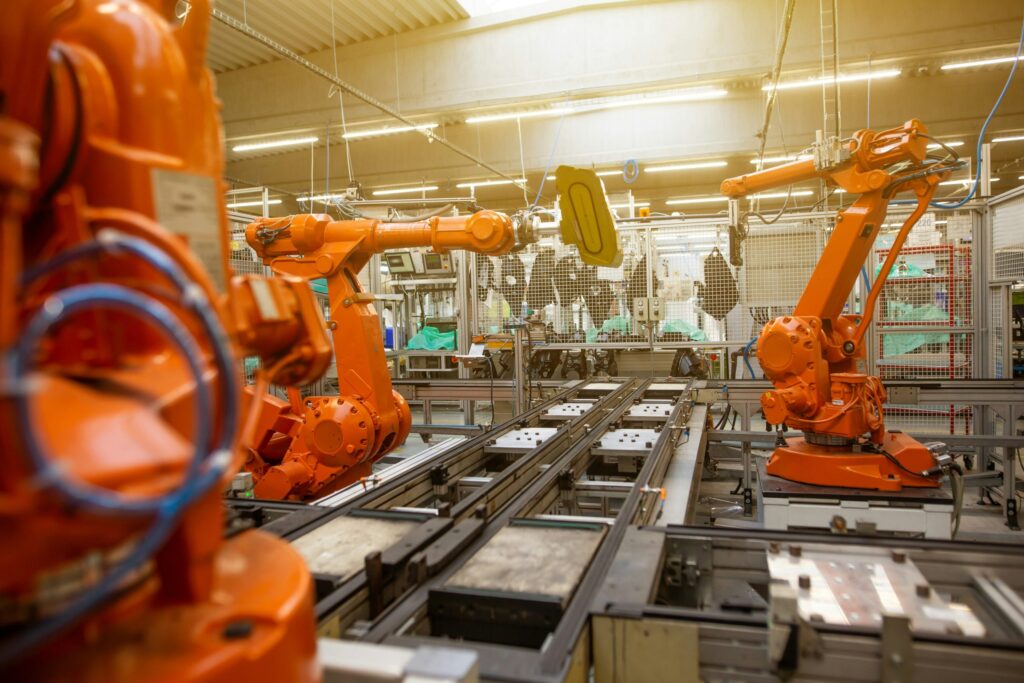Central and Eastern Europe (CEE) has long been a manufacturing powerhouse. However, the region, once known for traditional, labour-intensive production, is now on the cusp of a major transformation driven by automation, supply chain reconfigurations, and a pressing need for new skills. Embracing this transformation is essential for the region’s economic growth.
The four Visegrád countries (Czechia, Hungary, Poland, Slovakia) and Slovenia belong to the top 30 most competitive manufacturing exporters in the world according to United Nations Industrial Development Organisation (UNIDO), while the Observatory of Economic Complexity (OEC) economic complexity index ranks Slovakia, Hungary, Slovenia and Czechia in the top 20 most knowledge-intensive product exporters in the world.
Automation meanwhile, in the form of robotics, advanced machinery, and artificial intelligence (AI), is fundamentally altering CEE factories. Slovenia and Czechia are currently the regional leaders in the CEE transition towards high-tech manufacturing. Both countries are among those with the highest densities of industrial robots in the world (globally, Slovenia ranks 11th—ahead of Denmark, Czechia 18th—ahead of France), according to the International Federation of Robotics.
However, the surge in automation is having both positive and disruptive effects. On the one hand, it increases productivity and creates opportunities for higher-value manufacturing—something that several think tanks across the region, such as the Vienna Institute for International Economic Studies (wiiw) have long advocated as imperative to ensuring the region does not become stuck in what has been dubbed ‘the middle-income trap’.
On the other hand, there are concerns about potential job displacement, especially for low-skilled workers.
These concerns, however, are broadly unfounded, according to a major 2022 study by Ronald Bachmann and Myrielle Gonschor from the RWI Leibniz Institute for Economic Research in Germany and Piotr Lewandowski and Karol Madoń from Poland’s Institute for Structural Research (IBS).
Automation is not leading to a loss of jobs, instead reducing the risk of layoffs and increasing the chances of finding jobs, especially in economies where initial labour costs were lower, such as the Central European states of Poland, Slovakia, and Hungary.
The study looked at how the increase in robot installation influenced worker flows, such as layoffs and new hirings, and therefore employment and unemployment levels in European economies.
“The general message that comes from our research is that adoption of robots in Europe hasn’t led to a rise in unemployment,” Gonschor said. “The number of industrial robots per 1,000 workers quadrupled from 2000 to 2017, and the effects on employment have been seen as mixed. But it turns out that robots aren’t stealing our jobs – they’re changing them.”
“Contrary to the narrative of job losses driven by experience in the US market, in Europe robots are a complement to humans’ work, not a substitute for it,” added Lewandowski. “This is clearly visible in Central and Eastern European economies, where the effects are even stronger as investment in automation created new jobs. That may be because in those countries robots were often installed in greenfield investments, linked to the integration of these economies into global value chains.”
Supply chain shifts
The Covid-19 pandemic and the recent geopolitical tensions in the region—notably Russia’s invasion of Ukraine—have exposed vulnerabilities in the globalised supply chains that CEE manufacturing heavily relied upon.
According to the European Bank for Reconstruction and Development (EBRD), the likelihood of supply chains being mentioned during firms’ earnings calls has more than doubled between 2018 and 2022, rising from 30 per cent in 2018 to 61 per cent.
In response, companies are rethinking their strategies, moving towards regionalisation and building resilience. A recent EBRD survey found that more than 80 per cent of investment promotion agencies (IPAs) across the EBRD regions regard this reshaping of global value chains as an opportunity for their country.
“Moreover, many are actively seeking to attract foreign investors that are looking to diversify their supply chains, particularly companies that are active in green transition sectors,” the bank said in its 2023-24 Transition Report.
This shift towards regionalisation opens fresh opportunities for CEE manufacturers. Shorter supply chains can mean reduced logistics costs, faster response times, and improved resilience to disruptions.
The skills imperative
The high-tech transformation of CEE manufacturing nevertheless demands a workforce equipped with new skills. Workers need to transition from manual tasks to operating and maintaining sophisticated machinery, programming, and analysing data. There’s a critical shortage of engineers, IT specialists, and data scientists in the region.
Addressing this skills gap is crucial for CEE countries to remain competitive in high-value manufacturing. Governments, educational institutions, and businesses need to collaborate on upskilling and reskilling programs. Investment in STEM education (science, technology, engineering, and mathematics) and the development of vocational training programs are essential.
“Leaders in the region should know it’s their people who will implement the changes needed to future-proof businesses,” said Adam Krasoń, CEO at PwC CEE, last October on publication of PwC’s Global Workforce Hopes and Fears Survey, which revealed that CEE employees are less likely to believe the skills their job requires will change significantly in the next five years compared to their global counterparts.
PwC’s latest Global CEO Survey, published last month, meanwhile found that CEOs in CEE increasingly see transformation as vital to the survival of their businesses beyond the next decade. Almost half (48 per cent) of CEOs in CEE don’t see their companies surviving the coming decade under their current business model.
“The CEE results of our survey suggest to me that business leaders in our region are aware of a need to respond to rapid change,” said Krasoń.
The future of manufacturing in CEE hinges on successfully managing this transformation to a high-tech model. Embracing automation, ensuring supply chain resilience (which includes making the most of the race to nearshore), and investing in the workforce of tomorrow are imperative.
The countries that navigate this transformation most effectively are likely to emerge not merely as regional leaders in advanced manufacturing, but global leaders. The Visegrád Four and Slovenia appear to have a head start, but there’s time yet for other emerging Europe nations to catch up.
Photo by Simon Kadula on Unsplash.







